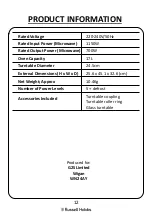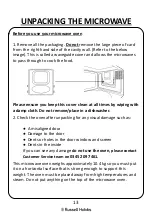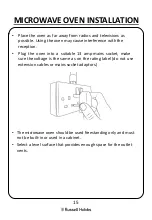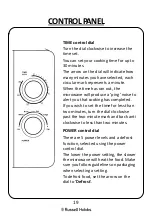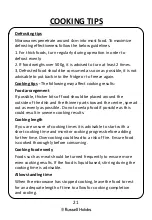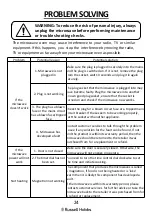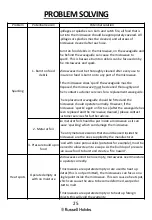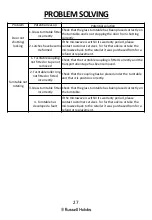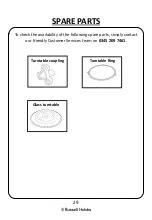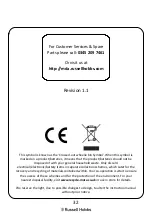
25
PROBLEM SOLVING
Problem
Potential reason
Potential solution
Sparking
1. Burnt on food
debris
Spillages or splashes can burn and catch fire, all food that is
put into the microwave should be appropriately covered. All
spillages or splashes must be cleaned, and all areas of
microwave cleaned after each use.
Burnt on food debris in the microwave, on the waveguide and
the behind the waveguide can cause the microwave to
'spark'. This is because burnt on debris can be focused on by
the microwaves and spark.
Microwaves must be thoroughly cleaned after every use to
ensure no food is burnt on to any part of the microwave.
If the microwave does 'spark' the waveguide must be
disposed, the microwave must be cleaned thoroughly and
then contact customer services for a replacement waveguide.
The replacement waveguide should be fitted and the
microwave should operate normally. However, if the
microwave 'sparks' again on first use (after the waveguide has
been replaced and the microwave cleaned,) please contact
customer services for further advice.
2. Metal or foil
No metal or foil should be put inside a microwave as it can
cause 'sparking' which can damage the microwave.
The only metal accessories that should be used inside the
microwave are the ones supplied by the manufacturer.
3. Pressure build up in
food
Food with none porous skins (potatoes for example), must be
pierced to allow steam to escape. As the build up of pressure
can cause food to burst and create a 'fire hazard‘.
Heat spots
Operated empty or
with no moisture
Microwaves cannot be run empty, microwaves need moisture
to operate correctly.
If microwaves are operated empty or are used to heat up
plates (this is not permitted), the microwaves can focus on a
single point inside the microwave. This can cause a heat spot,
which can cause the area to become deformed, warped or
start to melt.
If microwaves are operated empty or to heat up foreign
objects this will void the warranty.


